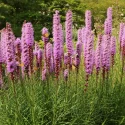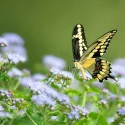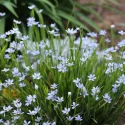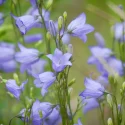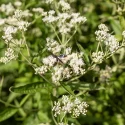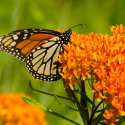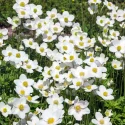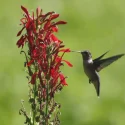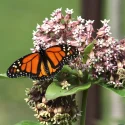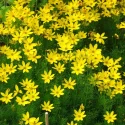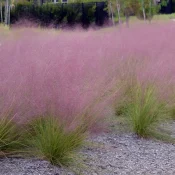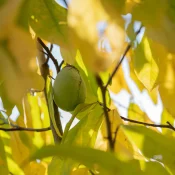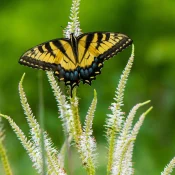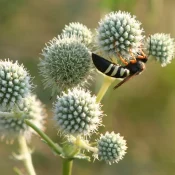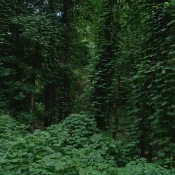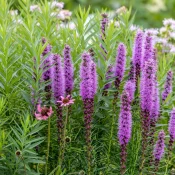Queen of the Prairie
You have to thank the generations before us for using their poetic license when naming this gorgeous native flower. The Queen of the Prairie is exactly that: a tall, frothy-pink marvel that grows between 4-6 feet tall. Although it’s a prairie flower, it likes to be in moist areas. Plant it once and enjoy its blooms every summer. Don’t forget to add a garden name tag when you plant!
- Full Sun, Part Sun
- Medium (3-5')
- Summer flowers
- Pollinator lifeline

Why is it important to plant native plants like Queen of the Prairie?
Planting native plants makes our yards and spaces gorgeous while helping the birds, butterflies, and animals (and helping save us time!) Here are three reasons why planting native is worth it:
- Without native plants, iconic animals like Monarch butterflies and songbirds won’t have the food or homes needed to survive
- Native plants save time and money: after the first year of getting established, native plants are happy with rain
- Native plants are gorgeous! Queen of the Prairie is a perfect example of how beautiful and resilient native plants are—they are always the best choice for our gardens.
Where is Queen of the Prairie native?
Queen of the Prairie happily grows from the Northeast to the Midwest and through the Mid-Atlantic region. It also has been ‘introduced’ to the eastern Canadian provinces, meaning it has been growing there happily for a few generations.
How do you plant Queen of the Prairie?
You can plant Queen of the Prairie from seed or from small plants. Scroll on to find some online sources.
Queen of the Prairie needs:
- Consistent moisture. This plant does not like to get dried out. Plant it along ponds, rivers, lakes, or streams if possible.
- Full sun to part sun. The sunnier and hotter the area, the more consistent its water needs will be.
- Lots of space. As the Missouri Botanical Garden says, “This is a large plant for large gardens. Can be spectacular, particularly when massed.”
Because it looks so good planted in a group, we’ve included it in our round-up of Single-Plant Gardens, which are landscaping ideas driven by a single plant (aka one-stop landscaping.)
Now that you know where to plant it, let’s share some tips on where to find it.
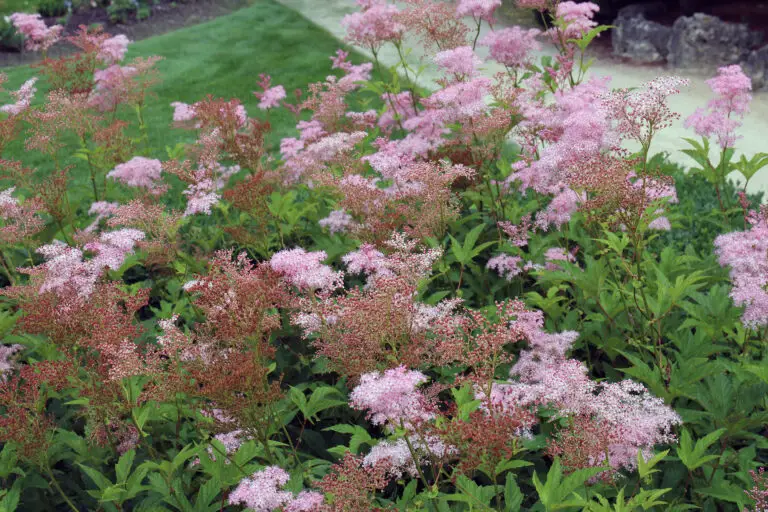
Where can you find Queen of the Prairie seeds and plants?
We are not going to lie—finding Queen of the Prairie may take a little extra sourcing. To make this journey easier, here some tips and links to to find Queen of the Prairie plants or seeds.
Buy Queen of the Prairie plants online
There are a few online nurseries that sell seeds or plants (or both). Some online sellers include:
- Prairie Moon sells seed packets ($3), bare root plants ($9), and potted plants
- Prairie Nursery sells potted plants in the spring
There are lots of other great sources that might be nearby—like native plant nurseries or your local native plant society. Here are some sources to look into:
Where can I find seeds and plants?
Finding native plants can be challenging (we partly blame Marie Antoinette.) To make it easier, we’ve assembled four sourcing ideas.
Native Nursery List
300+ native nurseries makes finding one a breeze
Online Native Plant Sellers
We've included 100+ online resources to help
Society Plant Sales
Every state has a native plant society; find yours
Online Communities
Local Facebook groups are a great plant source
What are good pairings for Queen of the Prairie?
Plant this gorgeous flower alongside other native plants that like water, like Joe-Pye Weed, Cardinal Flower, and New York Ironweed. If you’re looking for a shrub, Buttonbush is a great native pairing.
Queen of the Prairie is one of those unforgettable native flowers—like Rattlesnake Master, Purple Prairie Clover, and Buttonbush—that stand out for their sculptural beauty. All of these native plants have the added benefit of saving you time and money, since after they are established, all they need is rain to thrive.
It’s time we replaced some of the boring landscaping choices of the past with singular, jaw-dropping beauties like Queen of the Prairie. Your neighbors and the pollinators (and your water bill) will thank you. Happy planting!
Sources
- USDA Plant Database, Queen of the Prairie
- Missouri Botanical Garden, Queen of the Prairie







